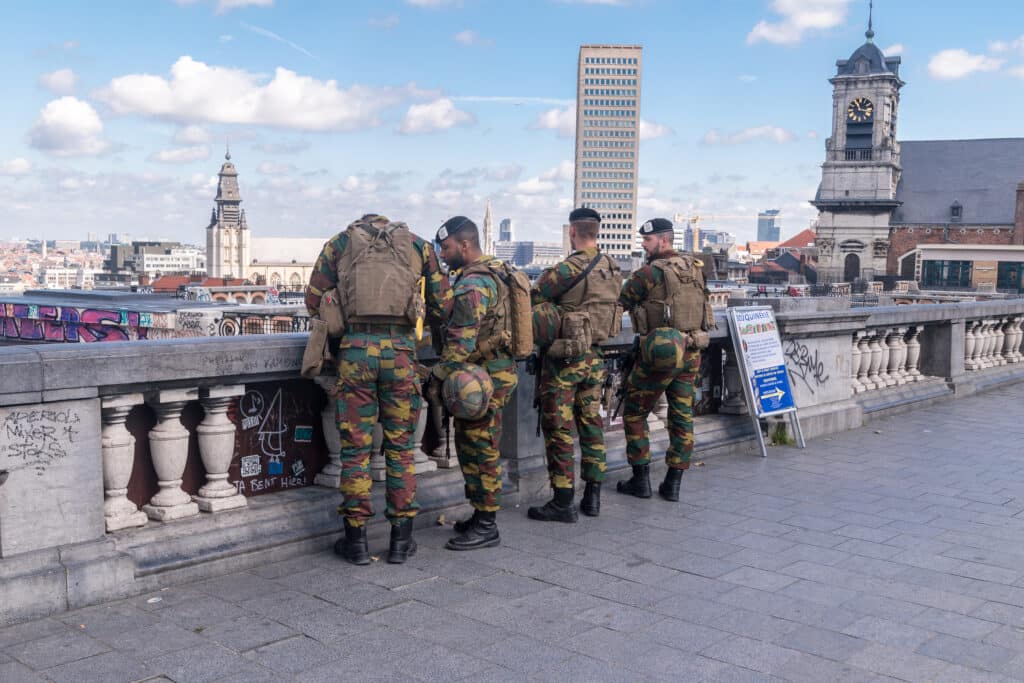The atrocities committed by Hamas on October 7 served as an incentive for global jihadist organizations—including ISIS (Daesh) and Al-Qaeda—to promote jihad against what they call the “infidels,” namely Jews and Christians. In their view, this attack underscored the legitimacy of their ongoing propaganda against Jews and Christians. Although these organizations praised Hamas for the events of October 7, ISIS—a radical Sunni Salafi group—considers Hamas and other Palestinian terror organizations to be traitors and infidels who have allied themselves with Shiite Iran, acting as its proxies and serving its Shiite interests.
Once Israel began its attacks on Gaza, ISIS sought to exploit the war by recruiting supporters worldwide to fight under the banner of Islam. Meanwhile, Al-Qaeda, a rival organization vying with ISIS for primacy among global jihadist groups, also applauded Hamas’s offensive and used it to call on Muslims around the world to seize this “historic moment for global jihad” against the “infidels.” Al-Qaeda views Hamas’s attack as a “historic” turning point, revealing the weakness of the “Crusaders and Jews” and thus presenting an opportunity to strike. Despite being a radical Sunni Salafi group itself, Al-Qaeda differs from ISIS in that it maintains some ties with Shiite elements, such as Iran (reportedly, Al-Qaeda’s current leader, Saif al-Adl, resides in Tehran). In the past year, there have even been reports of a cooperation agreement between the Iranian-backed Houthi movement in Yemen and Al-Shabaab al-Mujahideen in Somalia, an Al-Qaeda affiliate, involving collaboration and the supply of weapons. From Al-Qaeda’s perspective, Hamas—acting as an Iranian proxy—managed to disrupt the normalization process between Israel and Saudi Arabia, a moderate Sunni Arab state and leader of the Sunni world.
Throughout the months of this war, both ISIS and Al-Qaeda have engaged in propaganda calling for attacks against Jews and Christians worldwide, focusing on Jewish and Israeli institutions such as synagogues, Jewish community centers, and embassies. These organizations maintain cells in various parts of the world and routinely disseminate extremist incitement online, increasing both the lethality of their activities and the threat posed by unaffiliated individuals who adopt their ideology.
This intensified activity by global jihadist organizations has accelerated the rise of “lone wolf” terrorists, who consume incitement materials, pledge allegiance to these groups, and set out to commit acts of violence. Over the past year, several such attacks have occurred in Western countries and also in Israel. Global jihadist influence has reached both the Palestinian Authority and within Israel, creating a support network fueled by severe jihadi incitement on social media and contributing to a surge in “lone wolf” attacks after the events of October 7. For example, a planned ISIS attack at Teddy Stadium in Jerusalem was thwarted a year ago; all members of the cell were terrorists from East Jerusalem.
In addition to this growing phenomenon of individual attackers, there are also organizations such as ISIS’s Khorasan Province, which has increased its activity over the past year. This branch has carried out deadly attacks—including the bombing at a Moscow concert hall—and attempted attacks that were foiled (such as a planned assault in Vienna during a concert by the well-known singer Taylor Swift).
Implications and Possible Courses of Action
- Shared Threat to Israel and the West
The most immediate consequence for Israel and the West is that Israel stands on the front line against radical Islam as part of the broader clash between Western civilization and radical Islam. Both Israel and Western nations are in the same boat, deemed enemies by the global jihad movement. - Complexity of Muslim Immigration
A further necessity is recognizing the complexity surrounding Muslim immigration from the Middle East to Western nations. Mass Muslim immigration to Western countries has shown the risk that jihadist elements may infiltrate host societies. Many have established themselves in Western states, seeking to undermine them from within in the name of Islam. This dynamic affects not only the immigrants themselves but also their children—who become American or European citizens but can be drawn into radicalization. Grasping this complexity is crucial for Western nations to effectively address the security threats it poses. - Technological Tools and Social Media
Global jihadist groups have always excelled at exploiting technology. Now that many of their supporters live in North America and Europe, they can readily adopt Western technological tools, complicating matters even further. Over the past decade and a half, these groups have extensively used social networks for propaganda and incitement, and with the advent of artificial intelligence, they have further refined their capabilities, utilizing various AI tools. Israel and Western nations must recognize that global jihadist organizations exploit their familiarity with Western culture and its vulnerabilities to tailor propaganda campaigns precisely. This reality requires fresh strategic thinking and close monitoring to counter jihadist propaganda and remove inciting content before it inspires a lone attacker. - Maintaining Technological Superiority
Consequently, it is incumbent upon Israel and the West to maintain technological superiority: they must remain one step ahead of these organizations rather than lag behind. This includes strengthening oversight of social networks and open-source intelligence channels that daily transmit terror-promoting messages. - Financial Tracing
Tracking the flow of funds that sustains these organizations is another vital step. Understanding jihadist networks’ financial channels can yield significant intelligence and deal an economic blow to terror groups. Western nations should intensify efforts to trace the funding sources for these groups, mindful that they increasingly employ modern techniques such as digital currencies. Technological superiority is likewise crucial here for thwarting this challenge.

The views expressed in this article are those of the author and do not necessarily represent the views of the movement




